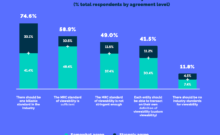The issue of transparency has taken center stage in the ad tech world, and for good reason. For too long, the industry has seriously lacked it.
Advertisers have led the charge by cutting spending to entities that refuse to shine a light into their black boxes. P&G’s Marc Pritchard was first to publicly demand viewability and fee structure transparency — a strong message from the largest digital advertiser on digital advertising’s largest stage. Many others have since followed suit.
These days, the focus has turned largely to agencies and the duopoly of Facebook and Google, but they are hardly alone in falling short of the industry’s rising standards. Data aggregators, too, often neglect to provide insight into third-party data used for targeting.
Their so-called “custom solutions” are often little more than a few data points strung together to create a rudimentary lookalike profile, but they are sold as sophisticated segments on par with Facebook’s. Advertisers then get billed for bundled services without knowing what’s included, paying a premium for technology and processes that did not advance their objectives.
The underlying structure of ad tech solutions can leave advertisers susceptible to inefficiencies, especially when vendors and advertisers are misaligned in how that structure was built. For example, an audience claiming to be custom to a brand may be in reality little more than a few generic data points that make up a faceless persona, leading the campaign to serve impressions to millions of people who may never buy.
There are plenty of data points and technology solutions available in the market that are capable of sussing out these unlikely buyers, making this problem an avoidable one that brands no longer need to tolerate.
If the industry wants to solve the transparency issue in all of its manifestations, it requires participation from every provider in the supply chain — not just agencies, Facebook and Google. Especially as the landscape faces significant consolidation, the threat of competition from inside and outside of the walled gardens will require DMPs, DSPs and data providers to actively participate in the industry cleanup.
Warning: Pendulum swing coming
Read More at The Original Article: martechtoday.com









